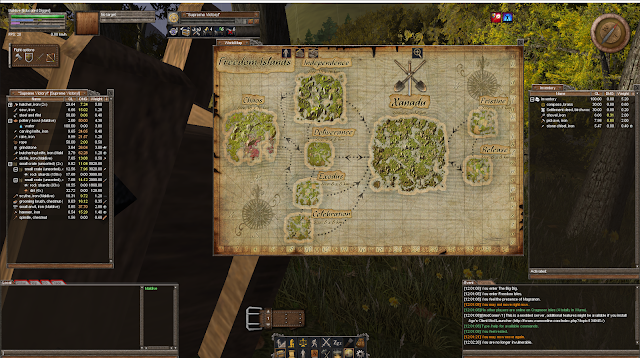Week 6: Wurm Unlimited Vs Stardew Valley
Welcome to week 6 of UX Design Roundup, where we will be taking one more turn down the rabbit hole of video games. Last week we looked at online store platforms for PC gaming, but the games themselves are a great source of UX research. This time we will be comparing two of my favorite sandbox games with robust crafting systems: Wurm Unlimited and Stardew Valley. You may be wondering what happened to week 1. I remember it saying something about not "needing no darn weather report" for climbing Mount Everest without a guide. Should be back anytime...
Wurm Unlimited
This game plops you into a colossal world with a basic set of tools and clothes, gives you a brief tutorial, then leaves you to your own devices. It also leaves you with many questions and a wide variety of wildlife that is mainly hostile and far above your ability to fight. Have fun! In my first playthrough, I founded a town on a scenic beach only to suffer an infestation of crocodiles, a sea serpent, and a dragon that killed me several times in a row with one hit. That was just the first couple of weeks. Despite my hardships, that's what made the game so fun.
What is not fun is keeping track of your inventory and doing stuff amid a plethora of UI elements. Some inventories are limited by the number of items (100 items) in them, by total weight (depends on strength skill), or by an item's volume. Keeping track of what container holds what and by what rules can start to require charts and graphs. To compound this, sometimes you build things by activating a tool and right-clicking something else, but other times you combine two things in the crafting window. Sometimes you can do both. Lastly, it takes a long time to accomplish anything with unleveled action timers set to nearly a minute. When it takes 30-40 hits to mine a single tile, that time frame becomes daunting when you need to build a tunnel 50 tiles long and three tiles wide...
Stardew Valley
This game is legendary in the indie community, largely thanks to its masterful design. The game starts you off by inheriting a neglected farm from your loving grandfather, being welcomed into a small-town community, given a brief tutorial, then left to your own devices with no pressure to do anything specific. Setting aside its spectacular character writing, Stardew Valley shines with a clean and straightforward interface and controls.
Crafting is accomplished by having the materials needed in your inventory and clicking the picture of the thing you need. For larger projects, you need to bring the materials to a specialist such as Robin the Carpenter for constructing buildings or Clint the blacksmith for upgrading tools. This simple system allows you to enjoy making stuff but then gets out of the way of the incredible immersion of the world and people around you. It's these loving touches that have made this game one of the most outstanding titles I have ever played, wins multiple awards every season despite its age, and boasts a fiercely loyal and devoted fan base.
Conclusion
Wurm delivers satisfaction through complexity and challenge, but that approach also causes it to have an incredible learning curve that simply intimidates most players into quitting. Even the most experienced player often has to ask other players questions on how to accomplish routine stuff, which is a sign of severe UX issues. Stardew Valley, on the other hand, stopped building its controls after they became functional, resulting in a marvelously simple game that is all the more fun because of it, which is the mark of a very well-designed system. Be sure to join us next week for another match of UX Design Roundup.




Comments
Post a Comment